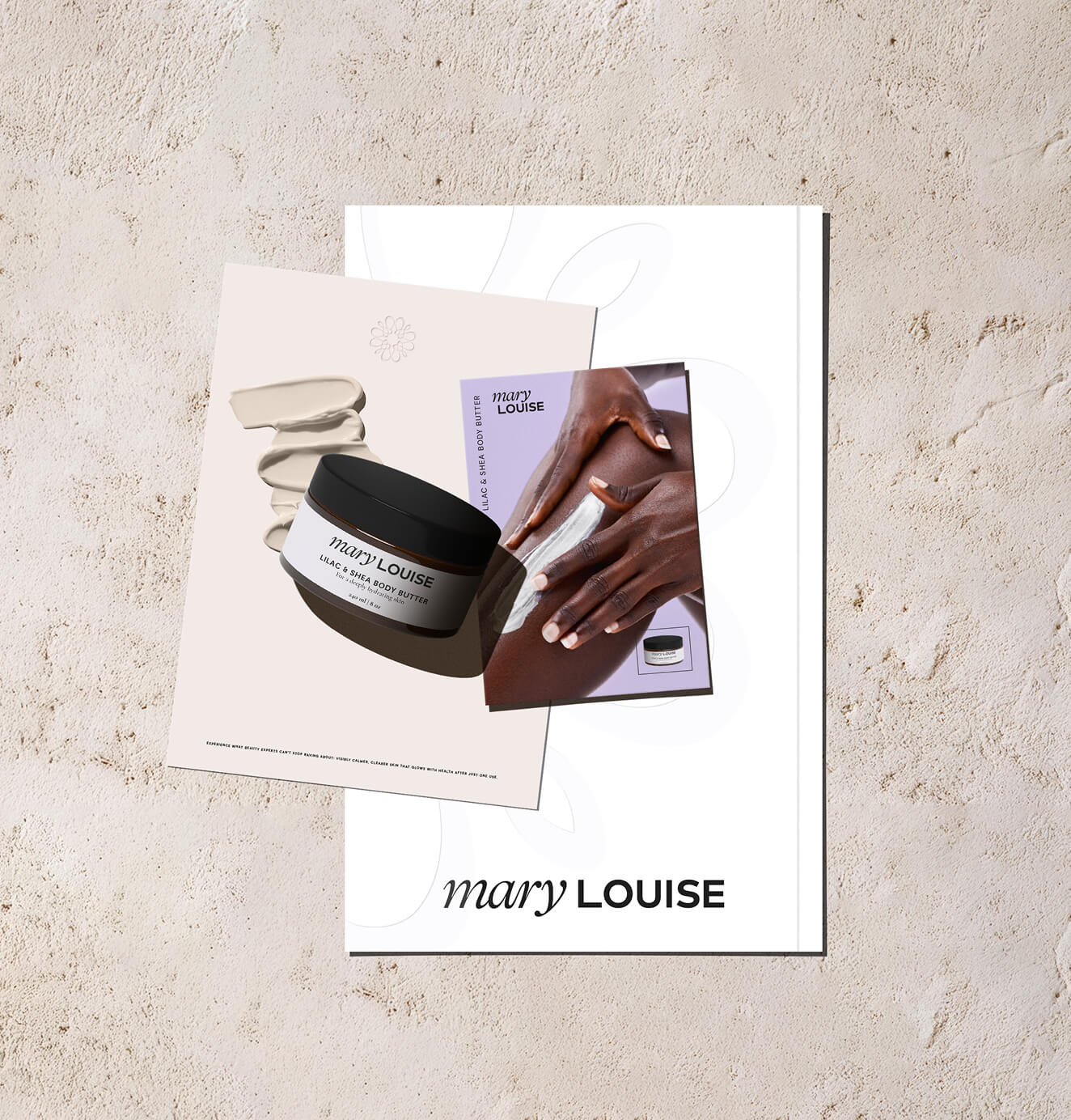What is a Brand Mission Statement? A Guide to Writing Yours
03/02/2025
Branding / Marketing Strategy
A strong brand mission statement is the foundation of your brand’s identity—this guide will help you craft a clear, impactful statement that drives your business forward.

Welcome to the wild world of branding, where words aren’t just words—they’re the rallying cry that can either catapult you into the stratosphere or leave you languishing in obscurity. You’re here because you’ve got something to say, a brand that’s more than just a logo or a product. It’s a story, a vibe, a vision. And it all starts with well-crafted brand mission statements. Think it’s just corporate fluff? Think again. This isn’t about slapping together some buzzwords and calling it a day. It’s about digging deep, finding the pulse of your brand, and letting that beat dictate every move you make. It’s your manifesto, your battle cry, your brand’s soul in a sentence. So, let’s cut through the noise and get down to business. We’re here to guide you through crafting a mission statement that’s as bold, unapologetic, and unflinchingly honest as your brand deserves. Ready to make some noise? Let’s dive in.
.png)


Getting Real About Mission Statements



So, what’s this fuss about mission statements, anyway?
Strip away the jargon, and you’re left with the raw essence of your brand – it’s the heartbeat, the reason your brand woke up this morning.
It’s not just some lofty sentence framed in your lobby; it’s the fuel that keeps your brand burning bright.
A mission statement is your brand’s tattoo – something permanent, bold, and incredibly personal.
It’s what separates the legends from the forgettables.
It’s your company's mission in a nutshell, telling the world who you are, what you stand for, and why you’re not just another face in the crowd.
In other words, the definition of a mission statement is “a formal summary of the aims and values of a company, organization, or individual.”
Now, let’s get one thing straight: every iconic brand out there, the ones you can’t get out of your head, they all have one thing in common – a killer mission statement.
It’s that secret sauce, that magic spell, that turns customers into loyal followers.
It’s what makes people choose your brand over the sea of sameness.
Get ready to dig deep and unearth the core of your brand’s existence.
Because, in the end, that’s what a mission statement is all about – it’s your brand’s truth, spoken out loud for the world to hear.
Breaking Down the Mission Statement DNA












Alright, let’s get into the nitty-gritty of what makes a mission statement not just good, but freaking unforgettable.
1. The Guts: First up, Core Values.
These aren’t just pretty words you throw around. They’re the guts of your brand, the principles you’d go to the mat for. Whether it’s innovation, sustainability, or straight-up rebellion against the status quo, your values are the flag you plant firmly in the ground. They tell your customers, “Hey, this is what we stand for, take it or leave it.”
2. The Heart: Brand Purpose is Next.
Your Brand’s Purpose next, we dive into the heart – your brand’s purpose. This is the “why” behind every move you make. It’s what gets you out of bed in the morning and keeps the lights on at night. Are you here to shake up the industry? To make people’s lives easier? Your purpose is the beacon that guides your brand through the fog of the marketplace.
3. The Face: Your Target Audience.
And then, there’s your audience – the face of your mission. Who are you talking to? The misfits, the trendsetters, the everyday folks? Understanding your audience is like looking in a mirror. You need to see who’s staring back at you and speak their language, tap into their world. Your mission statement should feel like a secret handshake with them.
4. The Voice: Crafting the Statement.
Finally, the voice – putting it all together. This isn’t about using fancy words or industry jargon. It’s about crafting a concise statement that speaks your truth in a way that’s so clear, so potent, that it can’t be ignored. It’s about finding that perfect blend of honesty, swagger, and heart. When these elements come together, you don’t just have a mission statement; you have a manifesto.
So, think of these elements as your mission statement’s DNA. Each part is crucial, and they all work together to create something that’s not just words on a page – it’s a living, breathing embodiment of what your brand stands for.
Strategic Steps to Crafting Your Mission Statement
Embarking on the journey to articulate your brand’s mission statement is a strategic endeavor. This process is about distilling the essence of your brand into a clear, compelling statement that resonates with your audience and aligns with your business goals, forming a critical part of your overall brand strategy. Let’s walk through the systematic steps to create a mission statement that not only defines your brand but also inspires action and loyalty.
Identifying Your Brand's Core Values
Begin by introspecting on your brand’s core values. These brand values are the pillars of your brand identity, influencing every business decision and customer interaction. Consider what principles are non-negotiable in your business operations and how they differentiate you in the marketplace. These values should be the foundation upon which your mission statement is built.
Defining Your Brand's Purpose
Your brand’s purpose is its reason for existence beyond making a profit. It’s about the impact you aspire to have on your customers and the wider community. Reflect on what drives your brand, what problem it solves, and the change it seeks to bring about. This purpose will guide the direction and growth of your brand, making it crucial to your company's mission statement.
Understanding Your Target Audience
Knowing your target audience is vital in crafting a mission statement that speaks directly to the people you aim to serve. Conduct thorough market research to understand their needs, preferences, and behaviors. Your mission statement should resonate with this audience, reflecting their values and aspirations, and illustrating how your brand aligns with them.
Composing Your Mission Statement
With a clear understanding of your brand’s values, purpose, and audience, it’s time to craft your mission statement. This clearly defined mission statement should be concise, memorable, and articulate the essence of your brand. Use clear, jargon-free language that conveys your message effectively. Remember, a great mission statement is both inspirational and aspirational, guiding your brand’s strategies and actions.
In summary, the creation of your mission statement is a strategic exercise that requires careful thought and analysis. It’s a critical component of your brand’s identity, encapsulating its core values, purpose, and connection with the audience. Approach this task with the seriousness it deserves, as it will serve as a guiding light for your brand’s future endeavors.
Best Practices and Common Pitfalls in Crafting a Mission Statement
As we delve deeper into the art of crafting a mission statement, it’s essential to understand the best practices that lead to success, as well as the common pitfalls to avoid. A well-thought-out mission and vision statement can be a powerful tool in your branding arsenal, but it requires a delicate balance of clarity, inspiration, and relevance. Let’s explore the key factors that will help you craft a mission statement that truly embodies the spirit of your brand.
Best Practices for Mission Statement Creation
- Clarity and Conciseness: Your mission statement should be easy to understand and remember. Avoid complex language or industry jargon that might alienate your audience. Aim for a clear, succinct statement that encapsulates your brand's essence.
- True to Your Brand: Authenticity is crucial. Ensure your mission statement genuinely reflects your brand's values and purpose. It should resonate with your brand's identity and not just be a generic statement.
- Inspirational and Aspirational: A great mission statement should inspire both your team and your target audience. It should set a vision for the future and reflect the aspirations of what your brand seeks to achieve.
- Inclusive and Accessible: Consider the diversity of your audience. Your mission statement should be inclusive, acknowledging and welcoming the variety of individuals who interact with your brand.
Common Pitfalls to Avoid
- Over-Promising: Avoid making claims or setting expectations that your brand cannot realistically fulfill. Your mission statement should be ambitious yet attainable.
- Vagueness: A mission statement that is too broad or vague will lack impact. It should be specific enough to give clear direction and purpose to your brand.
- Copying Trends: While it's important to be aware of industry trends, your mission statement should be unique to your brand. Avoid mimicking competitors, as this can lead to a loss of authenticity and differentiation.
- Ignoring Change: The market and consumer preferences evolve, and so should your mission statement. It should be reviewed periodically to ensure it remains relevant and aligned with your brand's growth and evolution.
In crafting your mission statement, remember that it is more than just a set of words; it's a reflection of your brand's identity and a commitment to your values, goals, and audience. By adhering to these best practices and avoiding common pitfalls, you can create a mission statement that not only defines your brand but also serves as a beacon to guide your business decisions and strategies.
Here are some examples of effective mission statements from various renowned brands, demonstrating how they encapsulate their brand's essence, values, and goals:
Here are some examples of effective mission and vision statements from various renowned brands, demonstrating how they encapsulate their brand's essence, values, and goals:
- Sweetgreen: “To inspire healthier communities by connecting people to real food.”
- Le Creuset: “Le Creuset is focused on inspiring and empowering people everywhere to make joy through cooking.”
- Sperry: “To ignite the human spirit through the power of sea-based discovery and adventure.”
- Spotify: “To unlock the potential of human creativity—by giving a million creative artists the opportunity to live off their art and billions of fans the opportunity to enjoy and be inspired by it.”
- Patagonia: “Build the best product, cause no unnecessary harm, use business to inspire and implement solutions to the environmental crisis.”
- GE: “To invent the next industrial era, to build, move, power and cure the world.”
- Trek: “To aid in the betterment of our planet through cycling.”
- TED: “Spread ideas.”
- Stitch Fix: “To change the way people find clothes they love by combining technology with the personal touch of seasoned style experts.”
- Nike: “To bring inspiration and innovation to every athlete in the world.”
- Framebridge: “To make it easy for you to tell your story by framing the things you love.”
- Etsy: “Keep commerce human.”
- Apple: “Apple strives to bring the best personal computing experience to students, educators, creative professionals, and consumers around the world through its innovative hardware, software, and internet offerings.”
- Blueland: “To make it easy for everyone to be environmentally responsible.”
- Google: “Our mission is to organize the world’s information and make it universally accessible and useful.”
- Herman Miller: “Inspiring designs to help people do great things.”
- Cariuma: “Our mission has been to make things in a way that’s better for people and the planet. It’s a journey. We are constantly evaluating and evolving our processes to be greener than they were the day before.”
- Ben & Jerry’s: “Our Economic Mission asks us to manage our Company for sustainable financial growth. Our Social Mission compels us to use our Company in innovative ways to make the world a better place. Our Product Mission drives us to make fantastic ice cream – for its own sake.”
- HubSpot: “We believe businesses can grow with a conscience, and succeed with a soul — and that they can do it with inbound. That’s why we’ve created a platform uniting software, education, and community to help businesses grow better every day.”
- Tesla: “To accelerate the world’s transition to sustainable energy.”
- MakeUp Eraser: “MakeUp Eraser is dedicated to creating the most sustainable makeup removal product in the world by using only the most accessible resource available: WATER. We truly believe we can eliminate the 3rd most wasteful product in the world: WIPES.”
Each mission statement uniquely reflects the core values, aspirations, and identity of the respective brand, demonstrating the variety and depth that a well-crafted mission statement can offer.
Want to learn more about brand platforms, Brand Strategy and Brand Identity? Keep reading!
If you need help with your companies brand strategy and identity, contact us for a free custom quote.
Workshop Activities: Crafting Your Brand’s Mission Statement

After exploring various examples of effective mission statements, it’s time to apply these insights to your own brand. This section provides interactive activities designed to guide you through the process of crafting a mission statement that resonates with your brand’s core identity and vision.
1. Value Identification Exercise
- List down your brand’s core values.
- Prioritize these values in order of importance to your brand.
- Reflect on how these values differentiate your brand from competitors.
2. Purpose Exploration Workshop
- Write a brief statement explaining why your brand exists beyond making a profit.
- Consider the impact your brand aims to have on customers and the community and how this aligns with your brand vision.
- Ensure this purpose aligns with your brand’s values and vision.
3. Target Audience Mapping
- Define your primary target audience, considering demographics, psychographics, and behavior.
- Explore how your brand connects with this audience’s needs and aspirations.
- Tailor your mission statement to speak directly and meaningfully to this audience.
4. Mission Statement Drafting Session
- Using the insights from the previous exercises, draft your mission statement.
- Keep it concise, clear, and true to your brand’s identity.
- Seek feedback from team members and key stakeholders to refine your statement.
5. Revisiting and Refining
- Reflect on the feedback received and revise your mission statement accordingly.
- Ensure it remains aligned with your brand’s evolving goals and market dynamics.
- Consider this a living document that may evolve as your brand grows.
By engaging in these workshop activities, you’ll be able to distill the essence of your brand into a mission statement that is not only powerful but also authentic and aligned with your strategic goals. Remember, a mission statement is a foundational element of your brand identity, one that will guide your decisions and actions as your brand navigates its path forward.
Conclusion: Embracing Your Mission Statement as a Guiding Star

With a well-crafted mission statement in hand, you’ve laid a foundational stone in the edifice of your brand’s identity. This statement is more than a collection of words; it’s a guiding star, a constant reminder of your brand’s purpose, values, and direction. As your brand evolves and grows, so too might your mission statement, adapting to new challenges and opportunities.
Remember, your mission statement is a dynamic tool, not just a static declaration. It should inspire your team, resonate with your customers, and guide your strategic decisions. It’s a compass for your brand’s journey, ensuring that every step you take is aligned with your core identity and aspirations, and it complements your vision statement by providing a glimpse into your company's future trajectory.
Keep revisiting and reflecting on your mission statement, ensuring it remains relevant and impactful. Let it be the yardstick by which you measure your brand’s initiatives, campaigns, and growth strategies. When fully embraced, your mission statement can become a powerful force, propelling your brand towards success and leaving an indelible mark in the minds of your audience.
FAQs
What is a brand mission statement?
A brand mission statement is a concise declaration that defines the purpose, goals, and values of a brand, guiding its strategies and decisions. A mission statement describes the brand's existence in the present and plays a crucial role in shaping and aligning various aspects of the brand, such as its identity, messaging, and visual elements.
Why is a mission statement important for a brand?
A mission statement is crucial as it communicates the brand’s core values and purpose, both internally to employees and externally to customers and stakeholders. It helps in guiding decision-making and establishing a brand’s identity.
How long should a mission statement be?
Mission statements should be concise and clear, typically ranging from one sentence to a short paragraph. The goal is to succinctly convey the brand’s core purpose and values.
Can a mission statement change over time?
Yes, a mission statement can evolve as the brand grows and market conditions change. It should remain relevant and reflective of the brand’s current values and goals.
How do I start writing a mission statement?
Begin by identifying your brand’s core values, defining your brand’s purpose, understanding your target audience, and then combining these elements into a clear and impactful statement.
Should a mission statement be specific to a company or can it be generic?
A mission statement should be specific to your brand, reflecting its unique identity, values, and goals. A generic statement can fail to differentiate your brand in the marketplace.
How do I know if my mission statement is effective?
An effective mission statement is clear and memorable, aligns with your brand’s values and goals, resonates with your target audience, and guides your brand’s actions and strategies.
Who should be involved in the mission statement creation process?
It can be beneficial to involve a diverse group of stakeholders, including leadership, employees, and sometimes even customers, to gain varied perspectives and ensure the statement aligns with all aspects of the brand.

Sloane Avery
As entrepreneurs, they’ve built and scaled their own ventures from zero to millions. They’ve been in the trenches, navigating the chaos of high-growth phases, making the hard calls, and learning firsthand what actually moves the needle. That’s what makes us different—we don’t just “consult,” we know what it takes because we’ve done it ourselves.
Want to learn more about brand platform?
If you need help with your companies brand strategy and identity, contact us for a free custom quote.
We do great work. And get great results.
+2.3xIncrease in revenue YoY
+126%Increase in repurchase rate YoY








+93%Revenue growth in first 90 days
+144% Increase in attributed revenue








+91%Increase in conversion rate
+46%Increase in AOV








+200%Increase in conversion rate
+688%Increase in attributed revenue












